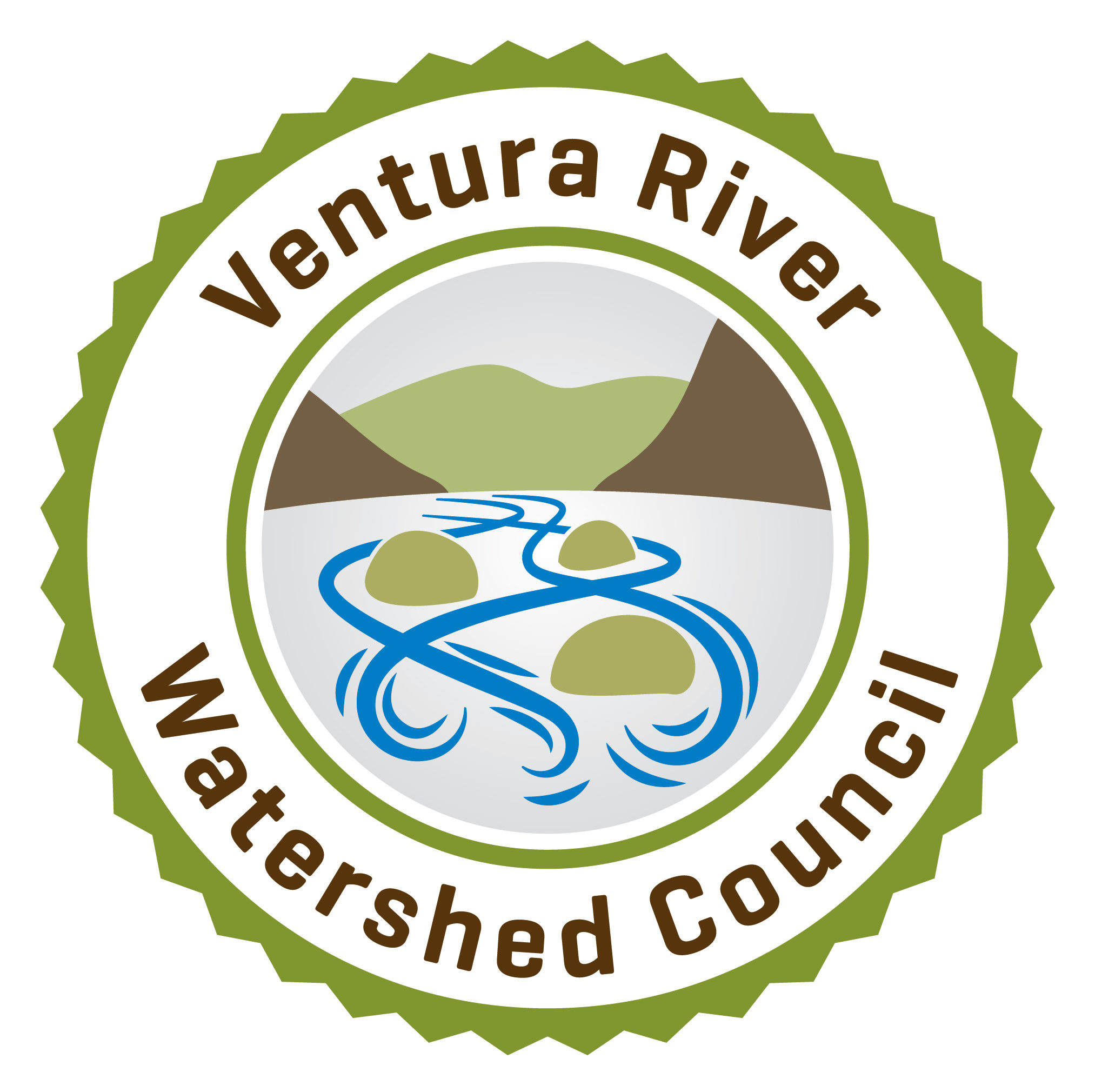If you're looking for the best way to save a lot of
water, start by looking in the places where you use the most water.

Over half of all the water we use is applied outdoors, so the potential water savings from landscape irrigation improvements are enormous.
Leaky residential plumbing can waste a surprising amount of water, and push your water bill dramatically higher.
Investing in water reuse and recycling can offer a constant supply of "free" landscape water - the potential savings might surprise you.
Below are details and links to resources for our top three picks for saving water.
1. Reduce Landscape & Farm Water Use
Irrigation is where we can REALLY make a difference.
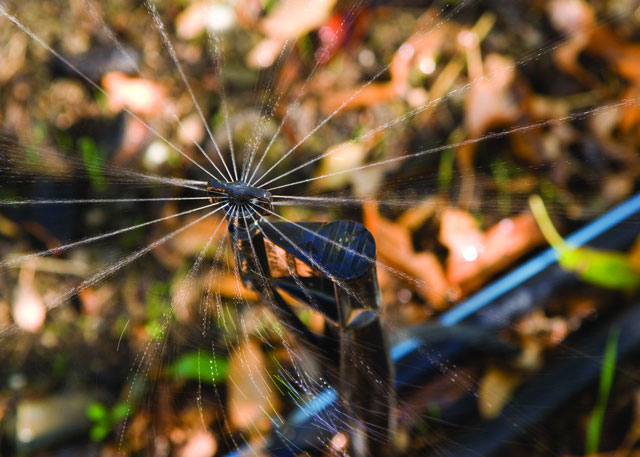 On average in California, over half of residential water is used outdoors. In the Ventura River watershed, that number is likely much higher given the number of large estates here. The watershed is also home to golf courses, large parks, and many public and private schools with extensive landscaped grounds. And over 6,000 acres of agricultural crops are irrigated with water from the watershed.
On average in California, over half of residential water is used outdoors. In the Ventura River watershed, that number is likely much higher given the number of large estates here. The watershed is also home to golf courses, large parks, and many public and private schools with extensive landscaped grounds. And over 6,000 acres of agricultural crops are irrigated with water from the watershed.
Reducing water used through irrigation can be done in many ways, from replacing thirsty plants (like turf) with low or no water using options (like natives), to ensuring that irrigation systems are running as efficiently as possible.
Some options for reducing irrigation water use are fairly easy and inexpensive, like watering only in early morning hours, and others are more of an investment, like upgrading sprinkler heads to more efficient models.
Even high efficiency irrigation equipment requires regular maintenance and monitoring to ensure maximum water savings. And opportunities for even greater efficiency are regularly introduced through new technologies.
There are people and resources available to help reduce landscape and farm water use—with information, expertise, and in some cases incentives. Free, on-site irrigation efficiency surveys are available to ALL water users in Casitas Municipal Water District’s wholesale service area (most of the watershed).
Below are links to a variety of helpful resources and information.
Water Efficient Landscapes
Free Onsite Irrigation Surveys
Make Your Landscape Act Like a Sponge
Ocean Friendly Gardens
- Surfrider
- City of Ventura
- Video
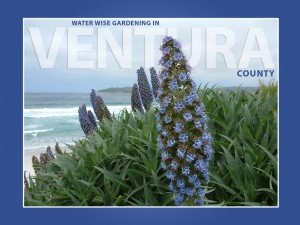
Low Water Using Landscape Ideas
Free Mulch from City of Ventura’s Cornucopia Gardens
Agricultural
Water Use
Free Onsite Agricultural Irrigation Evaluations - Info
Soil Moisture Monitoring (Univ. of Calif.)
Evapotranspiration Data in Ojai
CIMIS (California Irrigation Management Information System) Resources for Growers
Water and Drought Online Seminar Series (Univ. of Calif.)
Citrus Drought Strategies Presentation
UCCE, Dr. Ben Faber
Avocado Irrigation Presentation
UCCE, Dr. Ben Faber
2. Improve Wasteful Plumping & Pipes
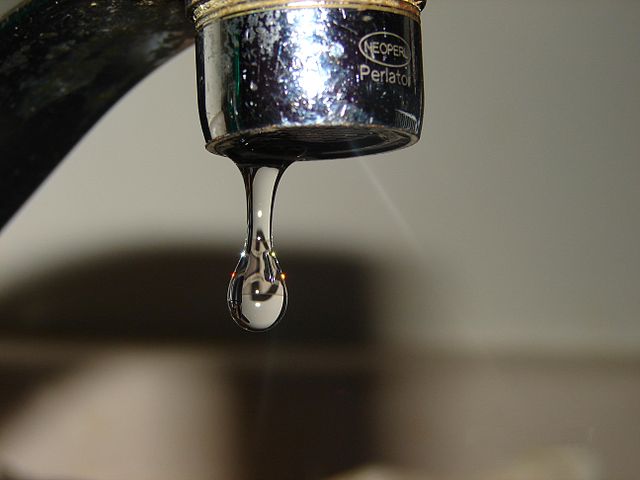 Finding and repairing leaks—it’s one of those critical maintenance tasks that can not only save HUGE amounts of water, but also lots of money on your water bill.
Finding and repairing leaks—it’s one of those critical maintenance tasks that can not only save HUGE amounts of water, but also lots of money on your water bill.
A tiny leak in a swimming pool’s plumbing system can lose 970 gallons of water in one day! A leaky faucet that drips at the rate of one drip per second can waste more than 3,000 gallons per year - that's about the amount of water needed to take 180 showers!
According to the US EPA, 10% of homes have leaks that waste 90 gallons or more per day.
Common types of leaks, like worn toilet flappers, dripping faucets and other leaking valves are easily correctable. Help detecting leaks is available for free from Casitas Municipal Water District.
The Ventura River watershed has hard water, which makes regular maintenance of pipes and plumbing all the more important. Hard water has a high mineral content and these minerals form deposits, or scale, that stick to the interior of pipes and other water fixture surfaces. This can lead to clogs and other problems with pipes and appliances. Toilet flappers should be checked regularly for this reason, as these deposits can prevent a good seal—a common cause of continuous leaks.
Leaks
Identify a Leak
For help determining if a leak may exist, call Casitas Municipal Water District at
805/649-2251 x128.
Report a Leak
To report a minor leak, call the appropriate water district’s phone number (Water District Contact Info). For a major leak, call 911 and the fire department will contact the appropriate water agency.
Toilet & Washing Machine Rebate Program
Large amounts of water (and money) can also be saved by upgrading to newer, high-efficiency fixtures. Toilets are the biggest component of indoor water use, accounting for about 33% of indoor residential water use. Older toilets can use 3.5 or sometimes up to 5 gallons per flush. Newer models are using as little as 1.29 gallons per flush.
Rebates on high efficiency toilets and washing machines are available for residential and commercial toilets. Rebate Program information.
3. Harvest & Reuse More Water
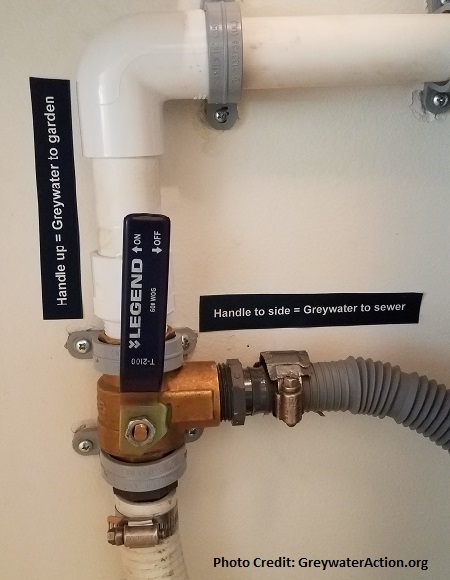 Graywater is water from washing machines, bathroom sinks, showers, and bathtubs. This is fairly clean water that could be available for irrigation, but instead is typically mixed with “black” water (from the toilet) and sent down the sewer.
Graywater is water from washing machines, bathroom sinks, showers, and bathtubs. This is fairly clean water that could be available for irrigation, but instead is typically mixed with “black” water (from the toilet) and sent down the sewer.
The volume of graywater available for reuse is very significant. Because of this, in 2009 the state of California modified building code requirements to make it easier for people to install simple plumbing systems at their homes that make graywater available for irrigation. Free graywater workshops are regularly held by the County of Ventura and Casitas Municipal Water District.
“Laundry to landscape” graywater systems that adhere to basic guidelines are now allowed without a building permit. "Simple" graywater systems - those using graywater sources beyond washing machines and discharging 250 gallons or less per day of graywater - can be permitted with a streamlined and relatively inexpensive "Graywater Standard Plan." "Complex" systems - those discharging more than 250 gallons per day, involve more technical design and review to be permitted.
When it finally does rain, wouldn’t it be nice to grab more of that water while we can? Harvesting rainwater can be done with rain barrels or cisterns that collect rooftop runoff, through “rain gardens” designed to capture and hold more water in the landscape, through engineered stormwater capture and treatment systems like bioswales, through “curb cuts” used to channel runoff from streets into planters, and many other techniques.
Graywater
GW-1 Graywater Code Guidelines
(Laundry-to-Landscape; no permit required.)
GW-2 Graywater Code Guidelines
(Graywater Standard Plan for "simple" residential systems that use graywater from sources beyond washing machines that will discharge 250 gallons or less per day. For Ventura County unincorporated areas only (as of 3/19/2015).
Rainwater Harvesting
Rainwater Harvesting – How much can I harvest?
Capturing Rainwater from Rooftops
(NRDC study)
